Wondering how to sell digital products on your website? Many people do. Setting up an online store has never been easier. Even if you don’t have any physical goods to sell, you can create a virtual item and market it to your audience.
There are several tools that you can use to get started. Whether you want to offer online courses or sell any type of digital file, doing some research can help you pick the right platform for your products.

💡 In this post, we’ll show you how to sell digital products on your website in four steps. Let’s dive right in!
Step 1: Do some market research 🔎
Perhaps you want to sell digital products to make extra money but have no idea what to offer. Alternatively, you might already have a product you want to sell.
There are many digital products you might sell, including:
- Ebooks or other types of downloadables (e.g., woodworking plans)
- Online courses, webinars, and coaching sessions
- Digital art, templates, and photography
- Software like plugins and apps
- Memberships and subscriptions
However, competition is high in popular industries. Therefore, it’s essential to do some research before launching your product. This process will help you identify gaps in the market that you can fill by establishing a unique selling proposition (USP). The USP should be something that truly sets your offering apart in a way that is valuable and relevant to your target customers.
There are several market research methods you can use. For instance, you might collect feedback from your audience. This strategy can be advantageous if you run a blog or have a significant social media presence.
Let’s say you blog about digital marketing, and you’re thinking of creating an online course on search engine optimization (SEO). You might ask your readers or followers if they’ve taken any SEO courses and what they liked or disliked about them.
You could also look at the products offered by your competitors to see if they’re lacking anything. For example, you might notice a need for more up-to-date courses that take into account Google’s recent updates and their E-E-A-T guidelines. Or maybe there aren’t people offering one-on-one SEO coaching calls.
Additionally, you could perform some keyword research to see what users are looking for and gauge the level of competition for that product. Google’s Keyword Planner helps you explore popular search terms in your niche:
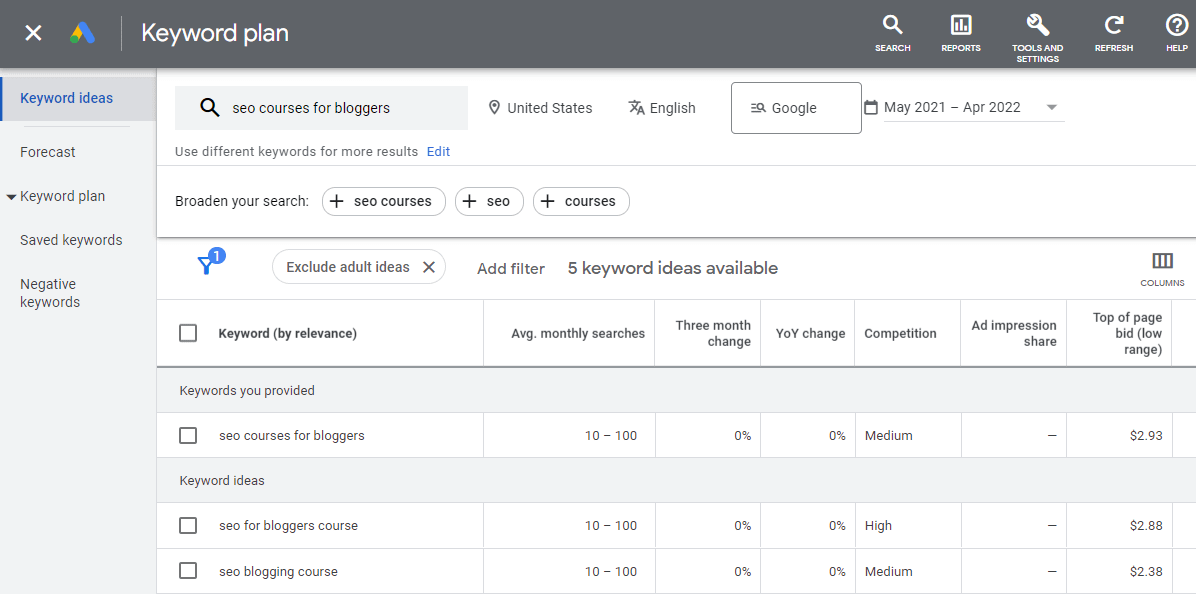
Google Trends is another free tool that lets you see what’s trending in relation to your subject matter.


Paid tools, such as SEMrush or Ahrefs, can also help you dig much deeper into search behavior.
Ideally, you’ll want to target search terms with decent monthly search numbers and low competition. A good tool to unearth those kinds of opportunities is LowFruits.
Step 2: Create a buyer persona 🧑
Once you’ve established the type of digital product you want to sell, it’s time to create a buyer persona. This is a profile of your target consumer.
If you already have a website, you could use a tool such as Google Analytics to learn more about your audience. This platform contains vital data about visitor demographics, behaviors, and more:
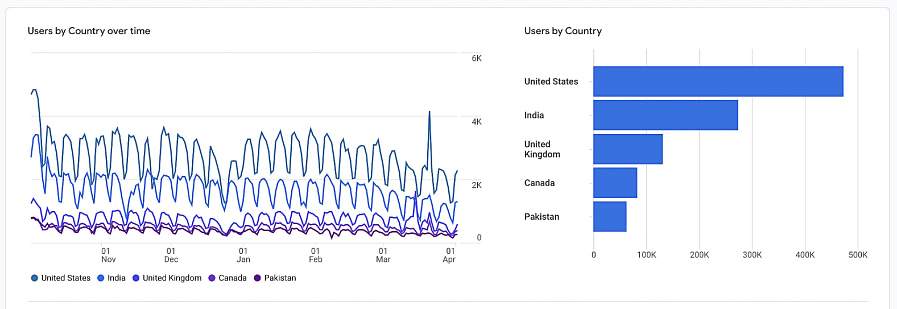
You can then use this information to build your profile.
If you haven’t yet set up a website yet, you could think about the type of person you wish to target.
Your audience profile should contain the following:
- Demographics, including age, gender, and nationality
- Educational or professional background
- Main interests and pain points
Having a clear idea of your target customer can help you promote your digital product to the right audience. For instance, if you’re creating social media plugins for WordPress, you might target full-time bloggers looking for an affordable solution.
Step 3: Select your platform and tools 🧰
If you already have a website, it might be easier to sell your digital products on your existing site than to start a new one. However, we recommend keeping your existing content separate from your online store.
📌 Fortunately, there are several platforms and tools you can use to create and sell your products. Let’s look 😎 at some of the best options on the market.
WordPress
WordPress is one of the most popular content management systems (CMSs). You can use it to create almost any type of website, from blogs and portfolios to online stores and ecommerce businesses.
There are several WordPress plugins you can use to sell products on your site. For instance, Easy Digital Downloads is a complete ecommerce solution that enables you to sell different types of digital products, such as photography, ebooks, software, and documents:
Easy Digital Downloads – Sell Digital Files & Subscriptions (eCommerce Store + Payments Made Easy)
Author(s): Easy Digital Downloads
Current Version: 3.2.12
Last Updated: April 29, 2024
easy-digital-downloads.3.2.12.zip
94%Ratings50,000+InstallsWP 5.8+Requires
It also comes with different payment gateways, including Stripe and PayPal. Additionally, it offers a smooth checkout process and easy customer management.
If you’re offering memberships on your WordPress site, you could use a tool such as MemberPress:
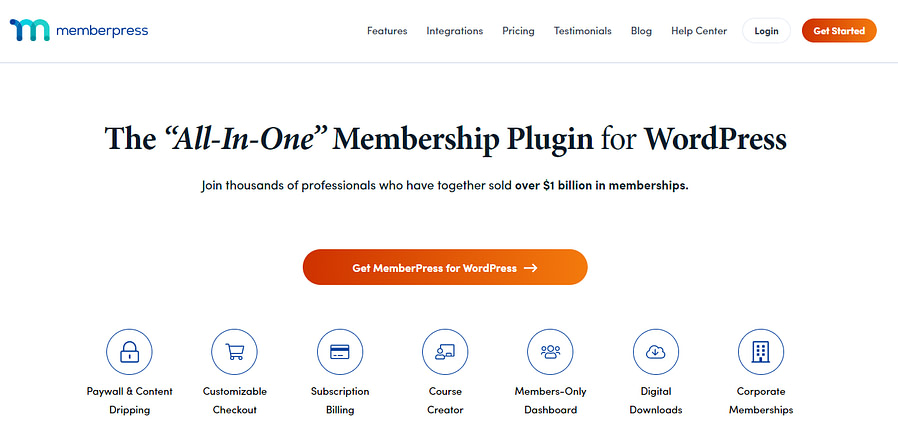
With this plugin, you can create an exclusive area on your site behind a paywall. Users will need to purchase a subscription to access some of your content.
Meanwhile, if you’re selling courses, you can use a learning management system (LMS) tool like LearnDash:
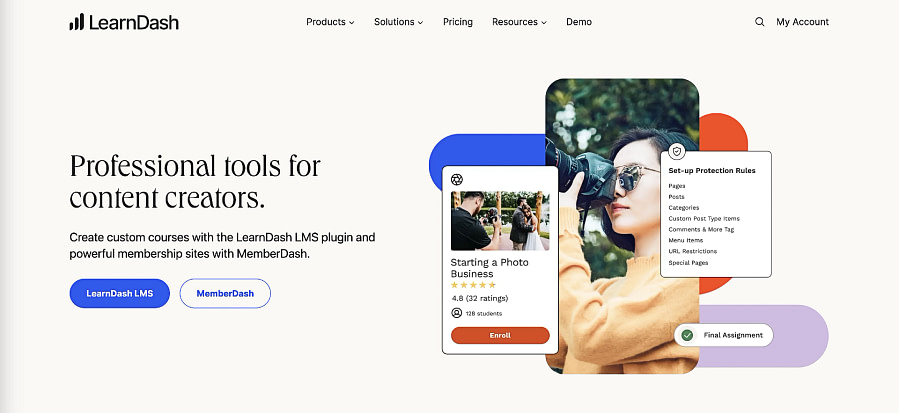
This plugin enables you to create an immersive learning experience on your site. LearnDash also lets you set up different pricing models, including onetime purchases and subscriptions.
As you can see, WordPress is a flexible platform that almost anyone can use. Whether you’re an artist, a software developer, or an educator, you’ll get total freedom over the design of your site and the management of your products.
You can set up your preferred payment methods, customize the layout of your shop and product pages, and select the best hosting for your ecommerce site. Additionally, you can integrate your site with various third-party tools, including email marketing services and analytics platforms.
💳 Price: The WordPress software is free. However, you’ll need to purchase web hosting and a domain name. Many WordPress plugins are also free, but you’ll typically need to upgrade to premium versions to access more features.
Shopify
Shopify is a popular ecommerce platform that powers over three million stores worldwide. You can use it to sell both physical and digital products:
With Shopify, you get your website, hosting, domain, and personalized email address in a single package. This means you can manage everything from one account. Additionally, Shopify provides its own marketing and analytics tools, so you won’t need to purchase additional services.
Shopify also has its own payment solution. With Shopify Payments, you can accept Visa, Mastercard, Discover, and American Express, and enjoy a low credit card rate.
If you want to manage every aspect of your online business from one place, Shopify might be the right platform for you. It’s also ideal if you’re thinking of adding physical products to your store. Moreover, you can fulfill and process orders on the go, thanks to the Shopify mobile app.
💳 Price: The Basic plan costs $29 per month (billed annually; month-to-month available for $39) and is ideal for new or small businesses. You can upgrade to the Advanced plan to access more features, including ecommerce automations, which costs $299 per month (billed annually; $399 if paying monthly).
Podia
If you’re selling courses and webinars, you might consider hosting your services on Podia. This platform enables you to create an interactive learning environment and grow a community:

With Podia, you can offer videos, quizzes, and drip content. You can also sell digital downloads, such as checklists, eBooks, and audio files.
If you’re giving webinars, you can also offer group calls or one-on-one sessions. Podia integrates with Zoom and YouTube Live.
Moreover, Podia lets you create a custom website for your courses and comes with built-in email marketing features. You can also set up an affiliate program and choose your own commission terms for members.
If you’re looking for an all-in-one LMS solution, Podia might be the right option. It enables you to offer your courses as a bundle and pre-sell your content.
💳 Price: Podia has a decent free plan but as you probably expect, you won’t get to use a custom domain on a free plan. Paid plans start at $4 per month (billed annually; $9 if paying monthly) and include one download and one coaching product. Transaction fees on this plan are 8% from Podia and 2.9% + 30 cents from the payment processor. The next plan up is considerably more expensive, but also offers considerably more features. You get unlimited downloads, unlimited coaching products, unlimited webinars, and a lot more.
Gumroad
Another powerful platform for selling digital products is Gumroad. You can offer video lessons, monthly subscriptions, tutorials, software, and more:
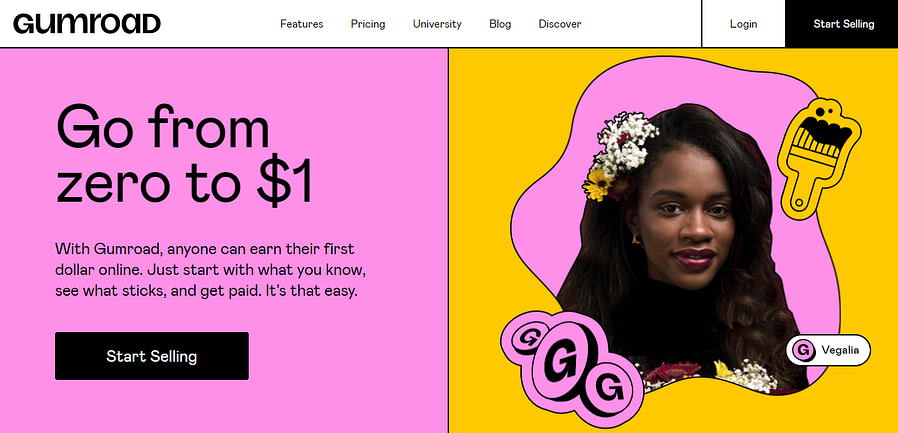
Gumroad comes with a flexible page editor to help you build and customize your site. Payments are processed through the platform, and you can also create discount offer codes for your products. If you’re selling software, Gumroad can even generate the license keys.
Additionally, you’ll get detailed analytics on your audience and purchases. You can also set up automated workflows, including email newsletters.
You might consider using this platform if you’re selling subscriptions or memberships. For instance, you could give members access to your software, course material, and other digital services or products.
💳 Price: You can set up an account for free. Gumroad will charge you a flat fee on each transaction, starting at 10%. You also have to pay payment processing fees to either Stripe or PayPal (whichever one of the two you use).
ClickBank
This popular online marketplace has been doing business since 1998 and in that time they’ve grown into an absolute powerhouse for both digital goods and physical goods.
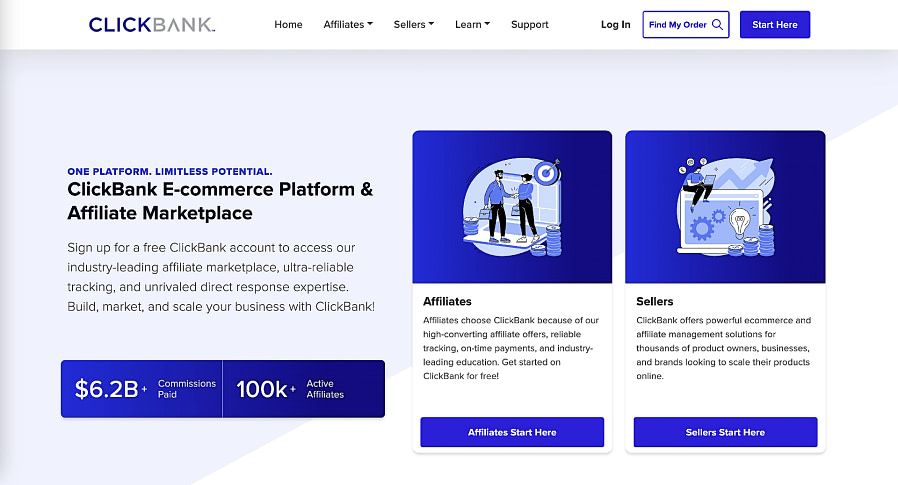
What sets ClickBank apart is that it offers access to a gigantic affiliate marketplace. This lets you set an affiliate commission for your product and then offer it up to the marketplace to promote. So now instead of being a one-man or one-woman show, you potentially have a whole army of people promoting your product as well. In the end, it means that your product receives greater visibility across the web and you make more money overall.
ClickBank is also fairly easy to open an account with, but if you do get stuck on something, they have an extensive knowledge base full of tutorials to help you out. They let you set your payout frequency and also your payout threshold and both are simple to adjust if you change your mind.
One downside to take into consideration is that ClickBank does not come with the option to build a website. Therefore, you’ll still need to find a solution to that outside of ClickBank. For example, you can use the aforementioned WordPress to build your site, but then process your payments through ClickBank. Check out this page for a closer look at how ClickBank works.
💳 Price: ClickBank charges 7.5% of the total price of your product + a $1 transaction fee. They also add on a dynamically generated sales tax based on the billing address of the buyer.
Step 4: Promote your product 📢
Once you’ve established how you’ll sell your product, you can start promoting it. If you already have a site, you can insert a banner or create a landing page.
It’s a good idea to start advertising your product a few weeks before the launch. This way, you can generate interest among your existing followers and attract potential customers.
There are several ways 🛣️ you can promote your digital product:
- Mention your product in blog posts. You can even design your blog content around your products. For example, you can offer some tips for creating an effective Google ad and include a plug for your marketing courses.
- Reach out to your subscribers. If you use email marketing, you can promote your offerings in your newsletter. If not, you can start an email list before the launch of your product to build your audience.
- Create social media posts. If you’re selling art or photography, a media-focused platform like Instagram would be an effective option. Alternatively, for courses or webinars, you might create a video and publish it on Facebook.
- Run paid ads. If you want an instant source of qualified traffic, you can pay to run ads on platforms like Facebook or Google. To make your ads extra attractive, consider hiring a pro on Fiverr to make it look like your product was featured in a podcast.
- Partner with influencers. This one is sort of a hybrid of the previous two. You can try to do it manually or through your personal or professional network if you happen to know people with big accounts (ideally in your niche). Alternatively, you can use a firm like Popular Pays or Brandwatch.
It’s important ℹ️ to continue promoting your product even after launching it. This consistency will help you keep your audience engaged and build brand awareness. You might even consider setting up an affiliate program to help spread the word (or use ClickBank’s build-in affiliate program mentioned earlier).
Start selling digital products today 🎢
Creating and selling a digital product can be an effective way to monetize your website and increase your income. For instance, you might sell your photos or graphic art, launch an online course, develop a plugin or app, or set up memberships on your site.

















 REELS BUNDLE
REELS BUNDLE